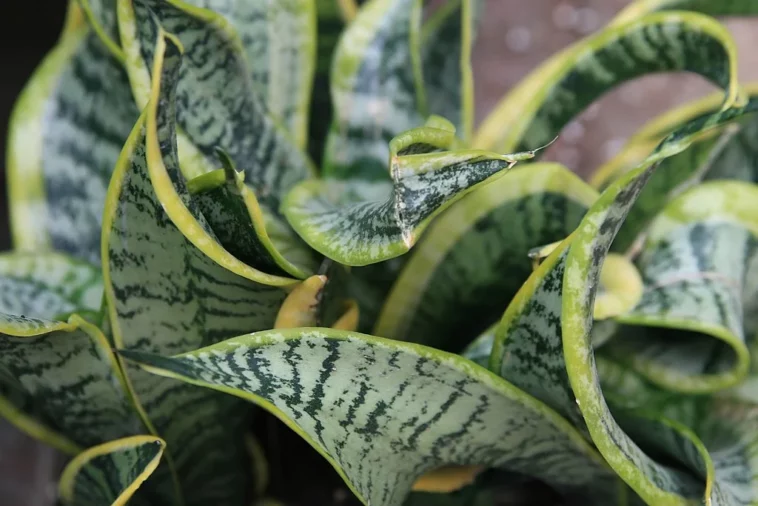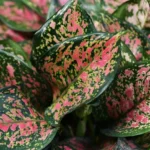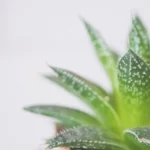The bird’s nest snake plant is a lovely compact succulent with glossy funnel-shaped leaves.
While mostly dark green, the leaves also have a pattern of grey and green coloring. The funnel-like leaves grow to form a rosette shape at the top.
Although the appearance alone can make this species of snake plant a lovely choice for indoors, it is also easy to care for.
Table of Contents
How To Care For A Bird’s Nest Snake Plant
The minimal care requirements make this plant a perfect option for beginners. The foliage adapts to various environments, enabling it to survive even when the basic care requirements may not be ultimately fulfilled.
As a result, these beautiful succulents are also suitable for individuals with little time to care for a plant.
What does your bird’s nest snake plant require?
While the succulent is low maintenance, some care is needed to ensure it remains strong and healthy. Providing for these basic needs helps this type of snake plant to live longer as well.
- Light Requirements: This snake plant prefers at least six hours of light per day, but will enjoy more if it is offered. Bright, filtered light is better. It will tolerate lower light levels if necessary, but the leaves may fade. Brighter lights allow the leaves to develop a deeper color.
- Temperature Requirements: The most suitable temperatures for bird’s nest snake plants are between 15-23 degrees Celsius (59-74 degrees Fahrenheit). The succulents can live in temperatures as low as 10 degrees Celsius (50 degrees Fahrenheit) for short periods. If the caregiver’s plant is exposed to these colder temperatures, it will revive once brought back into the heat, as long as it was not in the cold for too long.
- Humidity Requirements: The optimal humidity levels for the succulents ranges between 40-50%. In drier air, a humidifier can be used or a fine mist sprayed around the foliage.
- Water Requirements: When the foliage is planted, it should be well-watered. After this point, water can be added when the soil feels dry, especially if the sun is shining. These succulents must not be overwatered as this could cause disease or attract insects.
- Soil Requirements: Well-draining soil that contains sand, gravel, or volcanic rock is recommended. A potting mix designed for cactus plants also works well. This product can be mixed with sand or gravel if needed.
- Fertilizer Requirements: Bird’s nest snake plants do not require a lot of fertilizer. Well-balanced plant food can be added with watering once a month. The watering acts as was a way to dilute the fertilizer. Full-strength plant food should not be applied. Weak plant food for cacti can be used instead of a general kind if available.
Extra Tips For A Bird’s Nest Snake Plant
The main care requirements for these plants are fairly simple. However, it is always nice to know other details of maintaining a healthy succulent, whether it pertains to dealing with pests, illnesses, pruning, or otherwise.
Pests and Diseases
When growing in the right environments, bird’s nest snake plants do not often succumb to many insects or illnesses.
That being said, it is always better to know what to keep watch for in the event that something does arise. These are the most common issues that this species of snake plant deals with.
- Mealybugs: These white or light pink segmented insects are attracted to moisture. If the plant is overwatered, it may have issues with these pests. These creatures are usually found on the underside of leaves, but they may settle on the stem closer to the soil. The white cotton-like substance they leave behind might be noticed before the actual insect. Mealybugs can cause yellowed leaves or leaf drop. It is possible to kill individual insects by applying rubbing alcohol to them. However, there are also treatments, such as neem oil and insecticides or insecticidal soap that can help. Damaged leaves and stems should be removed from the plant.
- Spider Mites: These pests are tiny spiders, colored red, white, or black. While they are very small, they are still visible when inspecting the leaves and stems. They leave a dust-like web on the foliage. Insecticides may be used to treat infestations, but damaged areas such as yellow or brown leaves still need to be removed.
- Aphids: Such pests are typically reddish-orange and black. Like other pests, they feed on the stems and leaves, causing yellowing and leaf drop. Treatments are available for infestations, as are preventative measures like neem oil and water/dish soap mixtures.
- Root/Crown Rot: Fungal issues are typically caused by overwatering. Root rot may appear as blackening and softening of the stem. Crown rot also presents itself as a discoloration. Either of these may cause yellowed leaves and soft stems. To treat fungal issues, damaged areas must be removed. In most cases, the succulent requires repotting into a new pot with a fresh, well-draining potting mix. A fungicide may be required.
Pruning
While the bird’s nest snake plant can tolerate pruning at any time of year because of its slow growth rate, the best time is during the spring or summer. These two seasons are its main times of growth.
Pruning should be completed with sterilized, sharp pruning shears or scissors, cutting leaves off at soil level. Mature or damaged leaves require removal before any newer growth.
Because pruning creates stress for this plant species, if the succulent is not healthy, it is better to improve its condition before pruning. This process depends on what is lacking, for example, sunlight, drainage, or otherwise.
Propagation
Propagating bird’s nest snake plants is a simple process. This plant typically spreads through rhizomes that run just above or below the soil’s surface.
A caregiver needs to obtain a leaf cutting and poke the bottom part into the potting mix. It will eventually produce roots and grow.
To make the most of repotting these succulents, the root ball can be divided. Each division can be planted into a fresh pot to produce a new succulent.
Toxicity
This species of snake plants are mildly toxic if ingested. They should be kept away from children and pets.
Photo by David J. Stang, CC BY-SA 4.0 https://creativecommons.org/licenses/by-sa/4.0, via Wikimedia Commons


